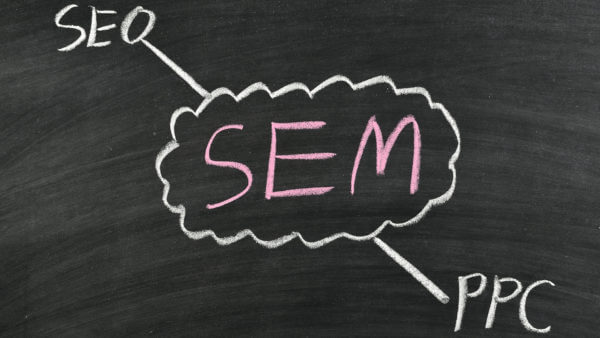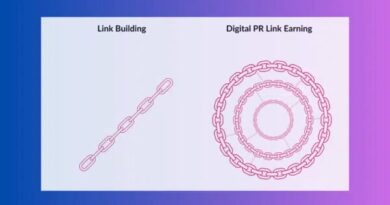How SEO and PPC strategies can work together to drive business goals
PPC and SEO are often handled separately. However, by combining these two tactics, retailers can obtain far greater business results and SERP outcomes.
Of course, this is a tragic mistake as PPC and SEO strategies are necessary to integrate into one another for a site to reach its fullest potential in the SERPs.
SEO is a method for increasing a site’s organic traffic through enhanced visibility and site authority. Alternatively, pay-per-click (PPC) advertising seeks to generate traffic through carefully created and targeted adverts in search engines, social and other popular online destinations.

While each is different, they both aim to achieve similar goals. Moreover, SEO and PPC strategies are often reliant on one another, feeding the other with vital information for helping to improve the performance of the other.
To fully understand the symbiotic relationship between these two marketing methodologies, let’s explore these two tactics in-depth, how they are different, how they are alike and outline precisely how SEO and PPC feed each other’s outcomes.
SEO and PPC: The differences
Search engine optimization (SEO) is the discipline that aims to increase the quality and quantity of traffic that a site receives from search engines such as Google or Bing. There are a variety of SEO techniques for improving rankings, including content creation, technical optimization, link building and other such activities.
On the other hand, PPC advertising is a model of digital marketing where advertisers pay an allotted amount each time an individual clicks one of their adverts.
While these two tactics are both encompassed under the umbrella of search engine marketing (SEM), there are some key differences between these two concepts.
Firstly, paid adverts (usually) appear at the top of search engine listings–above the organic rankings–which are influenced by search engine optimization implementations.

Secondly, advertisers who generate traffic from their ads must pay for those site visits. The same is not true of organic listings that obtain clicks as a result of earning visibility by utilizing SEO best practices.
Thirdly, the results generated from PPC campaigns–be it awareness, traffic, conversions or all of the above–is immediate. However, once the promotion ends, a site’s metrics will likely revert to pre-campaign levels.
Alternatively, SEO strategies often take a long time to gain momentum and businesses may not see a return on their investment for many months or even years. However, once a company’s search optimization strategy begins producing results, those changes tend to be long term and extremely prosperous.
SEO and PPC: The similarities
While PPC and SEO are different in many ways, they also share some obvious commonalities.
First off, both tactics aim to drive traffic to a website and are often aimed at generating conversions as well. While one does this through paid means and the other through the slog of climbing the SERPs organically, the end goal remains the same.
Secondly, SEO and PPC are both keyword-driven strategies. While advertisers will conduct keyword research to identify prosperous phrases to bid on and irrelevant ones to exclude through negative keyword lists, SEOs will also analyze relevant terms to understand how to optimize titles, content, technical elements and other critical on-site aspects.
With the differences and similarities of these two strategies outlined, let’s explore how using SEO and PPC together is the formula for search engine success.
How PPC and SEO help each other
Not only is it true that SEO and PPC are often in pursuit of the same ends, but each tactic is actually supportive of the other, producing gains in both campaigns. PPC aids SEO efforts by:
Maximizing SERP coverage
When a site runs PPC advertising, they appear at the top of the search results, thereby being the first thing that searchers see.
When coupled with SEO efforts, a brand can potentially consume a large portion of the SERPs, showcasing adverts at the top and organic listings below. Therefore, if a searcher skips over the ad section and goes directly to the organic rankings, they will find the business there as well.

This effectively allows sites to gain double the exposure they would if only one of these strategies were employed, thereby increasing the chances that the user will click-through to the brand’s site.
Moreover, given that a particular company is so well-represented in the SERPs, this provides consumers with enhanced confidence that the business is a reputable one that provides quality products or services.
By combining PPC and SEO, organizations can more effectively guide prospects to their site and encourage engagement among consumers.
Keyword symbiosis
PPC and SEO are both heavily dependent on keyword optimization to surface for related searches. For businesses to surface in the SERPs for relevant queries, they must target the correct words and phrases.
For brands that have been optimizing their sites for search for quite some time, they already possess keyword data that can help inform their PPC campaigns to produce better outcomes.
However, for those that are new to SEO, gauging the effectiveness of their efforts can be a challenge given that results take time to show. But, since PPC campaigns generate immediate results, advertisers can harvest keywords that have proven to be profitable and pass that information along to SEO teams to optimize pages for enhanced visibility and traffic.

Utilizing keyword information from PPC campaigns can help SEOs to understand the types of terms that users are searching to uncover a company’s pages. Instead of waiting on SEO data to begin rolling in, marketers can utilize PPC data to make the necessary adjustments to SEO campaigns.
Then, when SEO results do begin to show, that information can be fed back to PPC advertisers to help elevate the effectiveness of their promotions.
Elevated brand awareness
When a consumer clicks a PPC advert, they are taken to a landing page where they learn about a business and its offerings. From there, they might explore a site further to get a better gauge for the brand. In other instances, they might get distracted and bounce from the page.
While this may feel a bit disheartening, that consumer just became aware of the company and what it offers through the PPC ad. When that individual searches for similar products or services in the future, they are likely to remember their interaction with the company’s website and click on its organic listings.
As prospective customers grow increasingly familiar with a brand, they are more likely to engage with its organically listed content, thereby resulting in elevated levels of traffic and (potentially) conversions.
In the end, PPC advertising helps to generate awareness for a business, even if prospects don’t immediately convert, which can lead to more organic traffic in the future.
These are just a handful of the ways that SEO and PPC benefit one another.
However, if business owners don’t understand how to track and measure this information, this explanation is all for naught.
How to track and measure performance
The fact is that different businesses are going to have different objectives. Since the KPIs used to measure these goals will vary, we will explore this topic through the two most common targets of an online business: Traffic and conversions.
A business’s SEM goals don’t have to be complicated. However, they shouldn’t be overly simplistic, either.
Therefore, goals should cover information like:
- The desired amount of traffic to generate
- The budget to be spent on such leads
- The timeline to earn the traffic within
There are a variety of important PPC KPIs that advertisers should measure. However, in the context of this conversation, the most critical ones to monitor are click-through rates and conversions.
By analyzing the click-throughs and conversions generated by specific keywords, advertising can understand which terms are proving fruitful in getting consumers to take the desired action and generating revenue for a company.
Keywords that have shown to be the most beneficial can then be fed to a business’s SEO department for on-site optimization and content creation.
From the SEO side of things, Google Analytics is going to be their primary resource for measuring the outcomes of optimization efforts. The KPIs that these individuals will want to analyze include:
- Keyword rankings
- Time spent on page
- Organic traffic
- Organic conversions
Measuring these metrics through Google Analytics will let site owners know if they are targeting the right keywords, if consumers are finding a site with those terms, if users find their on-site experience engaging and if visitors are converting as a result.
By measuring and tracking this information, PPC and SEO teams can work together to elevate the performance and profitability of each methodology.
SEO and PPC have a lot in common, mostly that they each work in driving business goals.
Since these two tactics are intrinsically linked, it is imperative that retailers learn how to feed information back and forth between their SEO and PPC teams as this is the true secret to dominating the competition in the SERPs.


